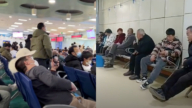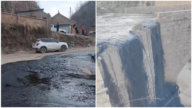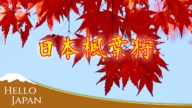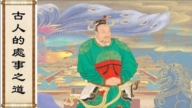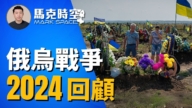【新唐人2014年08月29日讯】中国国家航天局网站上个星期发布“卫星发现大面积大麻种植区和非法越境通道”的消息,引发国内外轰动。中共公安部在26日通过官媒“辟谣”说,这个消息不是真的。随后,国家航天局网站删除了此前发布的信息。中国大陆的评论人士认为,航天局说的是真话,而公安部在掩盖真相。
国家航天局网站本月21日发布消息说,公安部利用“高分一号”卫星数据,在黑龙江、内蒙古、河北等地发现了多处罂粟种植区﹔在吉林、内蒙古等地发现了49年以来最大面积的大麻种植区﹔在中朝边界、新疆发现数十条非法越境通道﹔在福建发现海上大型走私油库等。报导还说,这些成果为有关部门执法提供了重要信息支撑。
信息发布后,各大新闻网站纷纷进行了转载,引起广泛关注。
据官媒《京华时报》25日报导,公安部禁毒局否认与国家航天局有过这方面合作,并表示,没有通过卫星发现种植大麻的情况。
但是《京华时报》又说,与航天局合作的并不是公安部禁毒局,而是公安部科技信息部门。该项目利用公安部卫星的光谱等高科技手段,可以发现种植毒品的情况。
到8月25号下午,国家航天局网站上已经看不到“卫星发现大麻种植区”的文章。国家航天局新闻处负责人张利文对大陆《澎湃新闻》表示,删除原因是“信息有出入”,但他拒绝透露更多信息。
那么,航天局和公安部两个中共官方机构之间,到底谁在说真话?原《人民日报》记者光远相信,航天局说的是真话。而公安部在掩盖黑幕。
原《人民日报》记者光远:“我觉得还是航天部发布的比较准确。如果它说底下有大麻种植,那肯定会有大麻种植的。这两个部门没有默契好。两个部门没有协调好。”
光远进一步分析,这件事可能是两个部门内斗的结果。航天局故意捅破消息,给公安部难堪。而这些大麻,甚至不排除是中共内部秘密种植的,但是用途不被外界了解。
光远:“他们之间没协调好。什么原因,咱们不清楚。一般的是,体制内都是应该互相补台的,不是互相来拆台。你非法种植这些大麻,都是一个体制内的,它得给他护短。明显的不护短,那肯定这里面有矛盾。”
山东作家巩磊也相信,航天局说的是事实。而公安部不愿意将“秘密”告知天下,才不惜打航天局一耳光。
山东作家巩磊:“因为这牵扯到公安部的形象,一些政绩问题,它当然是极力否认,极力作为保密的一些东西,不愿意公诸于众。因为打击毒品泛滥是公安的一个职责,它这个职责履行不好,它要负责任,所以他极力否认。”
光远认为,卫星拍到这么大批的大麻,如果公安部门不知道,那是严重的失职。但他也指出,这么大面积的种植大麻,如果没有相当大的保护伞,是做不到的。
光远还表示,几年前,他在内蒙古旅游时,就曾经看到一片人工种植的罂粟。
光远:“赤峰有一个达赖湖,这达赖湖附近就有人种植这个罂粟。开花非常好看,非常漂亮的小葫芦,单独的一个小圆葫芦,开得五颜六色的花,黄色的,粉色的,非常漂亮。当时我在旁边照相呢。人家告诉我这就是罂粟。但是我就不知道谁种的。那面积也得有一亩。”
根据公开资料,内蒙古、吉林两地近年一直有打击大麻种植的消息传出。《澎湃新闻》的报导,还引述了一则内蒙古禁毒支队官网“内蒙古禁毒网”,在2014年5月5号发布的信息称,“兴安盟积极组织开展罂粟、大麻毒品植原植物禁种宣传和籽种收缴战役”,文章中称,“国家禁毒办定于6-8月份对我盟进行卫星遥感监测”,鼓励居民检举揭发毒品种植。但在8月28号,“内蒙古禁毒网”已经无法打开。
采访编辑/秦雪 后制/李勇
China’s Public Security Ministry Denies Space Agency Discovery
China National Space Administration (CNSA), surprised both
home and abroad, for locating large fields of cannabis and
uncovering routes used by smugglers at the border
with North Korea last week.
But, Ministry of Public Security denied such findings
on the Aug. 26.
The CNSA announcement online was also soon deleted.
Mainland commentators believe the Public Security is trying
to cover up the truth which the CNSA accidentally revealed.
CNSA released on Aug. 21t, ministry used data from
Gaofen 1 satellite to locate plantations of opium poppies in
Heilongjiang, Inner Mongolia and Hebei;
the largest illegal marijuana plantation in Jilin
and Inner Mongolia since 1949.
About 10 secret passageways used by people to illegally cross
China’s border in the Xinjiang Autonomous region,
also the border with North Korea;
and a large offshore oil smuggling warehouse in Fujian.
Images taken by the hi-tech satellite, provided “important
informational support” to relevant departments at the ministry
during their law enforcement duties, the space authority said.
This news release was widely published by media
and caused widespread concern.
State media Jinghua reported on the Aug 25, the anti-narcotics
police denied the cooperation with CNSA and the findings
of a cannabis plantation.
Jinghua reported, instead, it is the Science and Technology
Information Department of the Ministry that
collaborated with CNSA.
The Ministry uses a satellite high-tech spectrum
to locate illegal plantations.
The afternoon of Aug. 25, the release was no longer available
on CNSA’s website.
CNSA news center director Zhang Liwen told The Paper,
the release was removed due to “information discrepancies,"
but declined to give more information.
So, between the two Communist official institutions,
who is telling the truth?
Former People’s Daily reporter Guang Yuan believes the
Ministry of Public Security, tries to cover up the shady facts.
GuangYuan: “I think the space agency’s information is more
accurate. There is surely cannabis cultivation if it
is said to be so.
But, these two agencies failed to reach a mutual
understanding beforehand."
Guang Yuan further analyzes, it may be the result of infighting
within the two departments.
CNSA deliberately exposed the news to embarrass the Ministry
of Public Security.
He suspects the marijuana was planted by the regime
for unknown usage.
Guang Yuan: “They failed to coordinate on this matter
for reasons we don’t know yet.
In general, all units within the system should supplement,
but are opposing each other.
The illegal plantation of cannabis is within the system.
Rather than help to cover it up, the conflict is obvious."
Shandong writer Gong Lei also believes what CNSA has revealed.
The Ministry of Public Security just slaps CNSA in the face
for reluctance to reveal the “secret".
Gong Lei: “It matters the image and the performance of the
Ministry of Public Security.
It will strongly deny the secrets that were exposed. It is the
public security’s duty to fight the drug. It clearly showed
it’s failed its mission. That’s why it’s denying it."
Guang Yuan indicates, it is a serious dereliction of duty
for the security, failing to find the biggest marijuana plantation.
He also explains, such a large plantation is surely hidden
beneath a large protective umbrella.
Guang Yuan mentions that in a tour of Inner Mongolia a few
years ago, he saw a large field of opium poppies.
Guang Yuan: “There is a Dalai Lake in Chifeng. There were
poppy flowers planted near the lake. The flowers are very pretty.
It comes with little individual gourd. The flowers are in various
colors, yellow and pink, all are very pretty.
While I was taking pictures, people told me they are of the
opium poppy strain. But I do not know who planted them.
The area covers at least one acre."
Reportedly, crackdown on illegal cannabis cultivation has been
heard in Inner Mongolia and Jilin.
The Paper reported a news release by Inner Mongolia drugs
control on May 5 regarding the battle to fight against
illegal plantation of opium poppy and marijuana.
The article described the national drug control will conduct
satellite remote sensing from June through to August and
people were encouraged to report any illegal cultivation.
But, Inner Mongolia drug control Website is not available
on Aug. 28.
Interview & Edit/Qin Xue Post-Production/Li Yong





